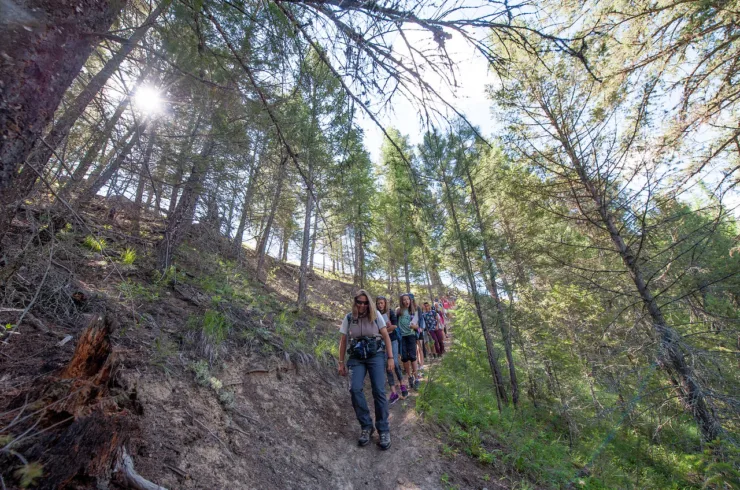A healthy planet relies on healthy, sustainable communities. That’s why for the past 25 years, Wildsight has delivered environmental education programs that connect children and youth to the world, their communities and themselves.
We think big. And we want our community of learners to think big too. Sometimes the big picture is beautiful— showing a class how a glacier feeds its entire watershed. Sometimes the big picture is hard— dialoguing with youth about our current climate reality, finding innovative ways to lean into an uncertain future. Always, the big picture is real. Our programs are designed to spark curiosity through hands-on experiences, move eco-anxieties through to practical solutions and transform ideas into collective action, always in age appropriate ways.
We also think small. Our learning experiences get children to think about the difference they can make today as one kid, class, school, community. How a sapling turns into a mighty tree, how an entire ecosystem relies on one keystone species: world-changing ideas start small, too. Our role is to turn hopelessness into possibility, to give real world examples of our individual yet immense power to create change.
Since 2001, we have made more than 100,000 meaningful connections to the wild for students across the Columbia Basin through our suite of environmental education programs.
Our programs:
Classroom With Outdoors and Winter Wonder make ecology come alive through hands-on activities like dip-netting, plant and tree identification ice crystals in the snow.
Beyond Recycling, our 24-week sustainability education program tackles topics such as energy, waste and consumption, and empowers students to come up with creative solutions to environmental challenges.
Watershed Matters engages Grades 10–12 students in the complexities of watershed management and governance, all within the context of a changing climate.
Go Wild and Columbia River Field School provide immersive multi-day adventures for high school students, challenging them to go beyond their limits and explore the deep and complex stories told by our region’s mountains and rivers. We also offer a full package of free lessons on the Columbia River watershed through our Teach the Columbia curriculum, best suited for high school students but adaptable for many ages.
Give the gift of awe and wonder by donating to our education programs or donate to the Jim & Laura Duncan Water Education Fund.
For inspiration, ideas, and resources to get your learners outside, visit our Environmental Education Resources page.







